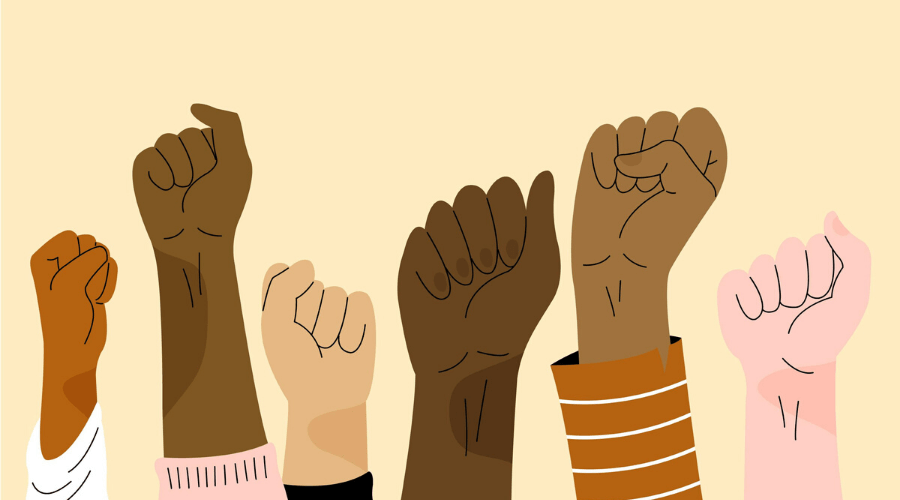Understanding race and racism

For many autistic people, autism is a very important part of their identity. But alongside autism they may have other important identities, like race, heritage and ethnicity.
Understanding racism can be complex and difficult.
Our autism friendly formats can help children and young people understand race and racism. Here you can download our Racism Explained easy read and our Racism Explained visual story.
How are we all different?
We are all different. There are lots of people that look different to you. For example, their hair, height or skin colour might be different.
Our skin tones are different because we have different amounts of melanin in our body. People with dark skin have lots of melanin, whereas people who are white don’t have a lot of melanin and their skin colour is paler.
Skin colour in an important part of your identity, but it should not cause you to be treated negatively by someone else.
Here are some questions that can help you understand your own identity: How do you identify? How do your family identify? Do you know people with a different skin colour to you?
Why does skin colour matter?
People face different challenges because of the colour of their skin. Discrimination against people based on their skin colour is wrong.
Sometimes, people judge others without knowing anything about them.
Sometimes, people have a belief that all people who look alike are the same.
Sometimes, people negatively discriminate people because of the colour of their skin.
These are all different forms of racism.
This happens mostly to people who are not white. Our easy read and visual story further explain what racism is.
Here are some questions that can help you understand your experiences of racism: Have you experienced racism before? Have you seen this happen to somebody else before? How does this make you feel?
How can we end racism?
Wherever anyone sees injustice like racism, we have a responsibility to confront it. There are lots of ways you can confront and tackle racism. You can be anti-racist and actively challenge racism in any of the following ways:
Challenge someone if you think they have said something racist or offensive
- Be a good ally
- Learn about others’ experiences
- Be more inclusive in your day to day life
- Recognise and understand your own unconscious biases
- Sign petitions to support anti-racist causes
- Contact government leaders asking what they’re doing to create a more fair and inclusive society
- Attend peaceful demonstrations or protests
- Acknowledge your own privilege and issues that might not have affected you personally
- There are lots of resources where you can find out more about race and racism
- Keep supporting causes that are anti-racist and working to gain equality for all
Questions to consider that can help you think about how you can try to end racism: Have you seen someone be anti-racist before? How can you be anti-racist? What are the benefits to society if lots of people try to end racism?

